This is a list of notable events in music that took place in the year 1732.

L'Olimpiade is an opera libretto in three acts by Metastasio originally written for an operatic setting by Antonio Caldara of 1733. Metastasio’s plot vaguely draws upon the narrative of "The Trial of the Suitors" provided from Book 6 of The Histories of Herodotus, which had previously been the base for Apostolo Zeno's libretto Gli inganni felici (1695). The story, set in Ancient Greece at the time of the Olympic Games, is about amorous rivalry and characters' taking places to gain the loved one. The story ends with the announcement of two marriages.
Giovanni Battista Pescetti was an organist, harpsichordist, and composer known primarily for his operas and keyboard sonatas. Musicologist and University of California, Santa Barbara professor John E. Gillespie wrote that Pescetti "stylistically stands as a bridge between Alberti and Domenico Scarlatti".
Giovanni Bertati was an Italian librettist.

Giuseppe Aprile was an Italian castrato singer and music teacher. He was also known as 'Sciroletto' or 'Scirolino'.
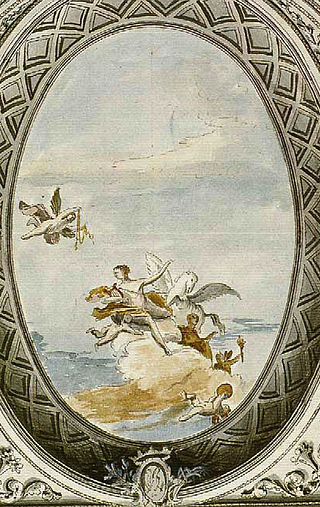
The Teatro San Moisè was a theatre and opera house in Venice, active from 1620 to 1818. It was in a prominent location near the Palazzo Giustinian and the church of San Moisè at the entrance to the Grand Canal.
Antonio Maria Lucchini or Luchini was an Italian librettist. His texts were set to music by Antonio Vivaldi, Baldassare Galuppi, Leonardo Vinci, and Rinaldo di Capua, among others.
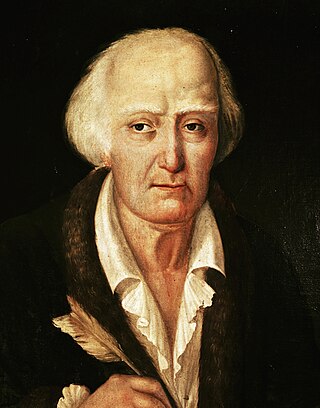
Giacomo Domenico Mario Antonio Pasquale Giuseppe Tritto was an Italian composer, known primarily for his fifty-four operas. He was born in Altamura, and studied in Naples; among his teachers were Nicola Fago, Girolamo Abos, and Pasquale Cafaro. Amongst his pupils were the young Vincenzo Bellini around 1821, plus Ferdinando Orlandi. He died in Naples.
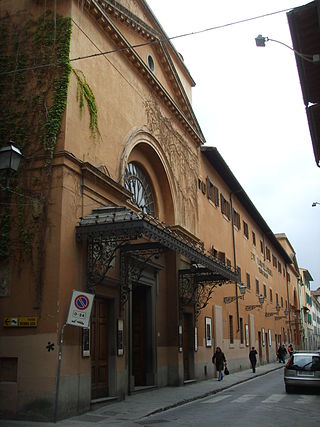
Antonio Salvi was an Italian physician, court poet and librettist, active mainly in Florence, Italy. He was in the service of the grand-ducal court of Tuscany and the favourite librettist of Prince Ferdinando de' Medici. Salvi was one of the developers of the opera seria.

This is a chronological list of classical music composers from Italy, whose notability is established by reliable sources in other Wikipedia articles.
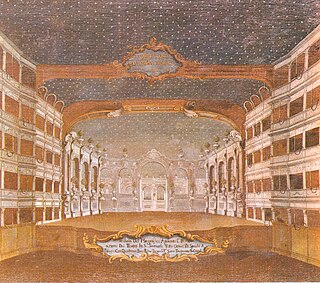
Teatro San Samuele was an opera house and theatre located at the Rio del Duca, between Campo San Samuele and Campo Santo Stefano, in Venice. One of several important theatres built in that city by the Grimani family, the theatre opened in 1656 and operated continuously until a fire destroyed the theatre in 1747. A new structure was built and opened in 1748, but financial difficulties forced the theatre to close and be sold in 1770. The theatre remained active until 1807 when it was shut down by Napoleonic decree. It reopened in 1815 and was later acquired by impresario Giuseppe Camploy in 1819. In 1853 the theatre was renamed the Teatro Camploy. Upon Camploy's death in 1889, the theatre was bequeathed to the City of Verona. The Venice City Council in turn bought the theatre and demolished it in 1894.
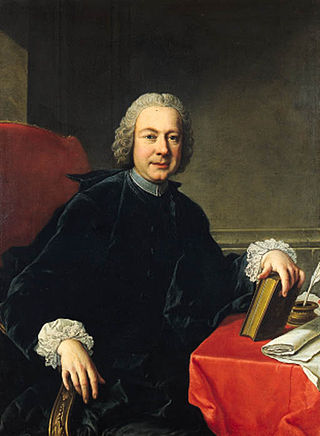
Adriano in Siria is a libretto by Italian poet Metastasio first performed, with music by Antonio Caldara, in Vienna in 1732, and turned into an opera by at least 60 other composers during the next century. Metastasio based the background of the story on late Classical works by Cassius Dio and Elio Sparziano.

Sebastiano Biancardi, known by the pseudonym Domenico Lalli, was an Italian poet and librettist. Amongst the many libretti he produced, largely for the opera houses of Venice, were those for Vivaldi's Ottone in villa and Alessandro Scarlatti's Tigrane. A member of the Accademia degli Arcadi, he also wrote under his arcadian name "Ortanio". Lalli was born and raised in Naples as the adopted son of Fulvio Caracciolo but fled the city after being implicated in a bank fraud. After two years wandering about Italy in the company of Emanuele d'Astorga, he settled in Venice in 1710 and worked as the "house poet" of the Grimani family's theatres for the rest of his career. In addition to his stage works, Lalli published several volumes of poetry and a collection of biographies of the kings of Naples. He died in Venice at the age of 62.
Adriano Morselli was a Venetian librettist active between 1679 and 1691. His libretti have been set to music by composers like Antonio Vivaldi, Alessandro Scarlatti, Giacomo Antonio Perti, Bernardo Sabadini, Carlo Francesco Pollarolo and Domenico Gabrielli. His most popular works were L'incoronazione di Dario from 1684 and Tullo Ostilio from 1685, and the unfinished La pace fra Seleuco e Tolomeo from 1691.
Il re pastore is a 1751 Italian-language opera libretto written by Metastasio. It was first set by Giuseppe Bonno in 1751, but best known today in the version by Gluck (1756) and the Il re pastore of Mozart (1775).
Ipermestra is an opera libretto by Pietro Metastasio first set by Johann Adolph Hasse 8 January 1744, and in the November of the same year by Christoff Willibald Gluck.

Diana Vico was an 18th-century Italian contralto who had an active performance career in Europe from 1707 through 1732. Performing primarily in operas, she sang in opera houses in Italy, Germany, and England. She specialized in portraying male characters on stage, and appeared in the world premieres of operas by prominent composers of the Baroque period, including works by Antonio Vivaldi and George Frideric Handel among others.










